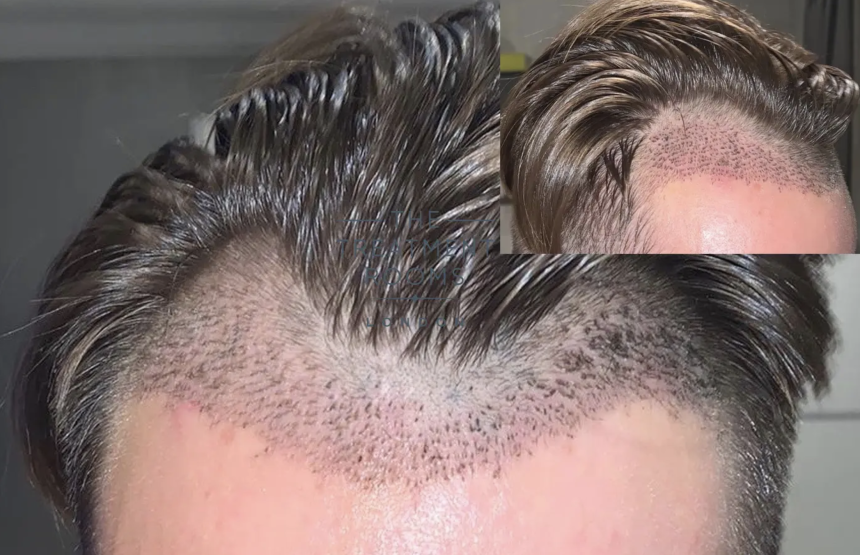Hair loss is a common issue affecting millions of people worldwide, negatively impacting their self-esteem and emotional well-being. Fortunately, hair transplants offer hope to those seeking to regain a fuller head of hair. In this guide, you’ll learn all about hair transplants, the procedures involved, and what you can realistically expect from them.
How Hair Transplantation Works
A hair transplant is a surgical procedure in which hair follicles from a part of the body are moved to a bald or balding part. While it’s typically used to help those with male pattern baldness, this procedure can also enhance the hairline or restore eyelashes, eyebrows, beard hair, chest hair, and pubic hair. The two techniques of transplanting hair are follicular unit transplantation and extraction.
FUT is where a strip of skin is removed, usually at the back of the head. This strip is meticulously sectioned into individual grafts, with each graft comprising one to multiple hair follicles. The advantage of FUT is that it typically allows for a larger number of grafts to be transplanted in a single session.
FUE, on the other hand, involves extracting individual hair follicles directly from the scalp. Using tiny punch incisions, the surgeon removes follicles one by one, which are then transplanted to the balding areas. FUE is more time-consuming but avoids the linear scar often associated with FUT, making it a popular choice for those who wear their hair short.
Evaluating Candidacy for Hair Transplants
Not everyone experiencing hair loss is a suitable candidate for a hair transplant. Several factors influence suitability: the quality and density of the donor hair, the extent and pattern of baldness, and overall health conditions. Ideal candidates are those who have sufficient donor hair to cover the balding areas.
It’s essential to have realistic expectations. A hair transplant can significantly improve appearance but cannot provide the density and fullness of a youthful head of hair. Consulting with a hair transplant specialist is crucial for a thorough evaluation. During this consultation, the specialist assesses the hair loss and discusses potential outcomes.
The psychological impact of hair loss is profound, and while a hair transplant can improve self-image, it’s important for candidates to approach the procedure with a balanced perspective.
What to Expect Before, During, and After
Preparation for a hair transplant begins weeks before the actual procedure. Patients may be advised to stop taking certain medications and to avoid alcohol and smoking, as these can affect healing.
On the day of the procedure, the patient is typically given a mild sedative. The duration of the surgery depends on the extent of the transplant but can last several hours. Both FUT and FUE are generally performed under local anaesthesia.
Post-procedure care is vital for a successful transplant. Patients may experience some swelling, pain, and discomfort in the initial days. It’s important to follow the surgeon’s instructions on hair care, medication, and activities to avoid.
The healing process varies but generally, patients can return to work within a week. The transplanted hair will fall out within a few weeks – a normal and expected part of the process. New growth usually begins after a few months, with most seeing significant improvement within six to nine months.
Potential Risks and Side Effects
While hair transplants are generally safe when performed by qualified professionals, they still come risks and side effects. It is critical for prospective patients to be aware of these:
• Swelling and Bruising: Common in the days following the surgery, especially around the forehead and eyes.
• Pain and Discomfort: Usually mild and manageable with prescribed painkillers.
• Infection: Rare but possible, requiring immediate medical attention.
• Scarring: In FUT, a linear scar at the donor site is common, whereas FUE might leave tiny dot scars.
• Unnatural-looking Hair Growth: This can happen if grafts are not placed correctly.
• Numbness: A temporary sensation in the treated areas.
• Shock Loss: Temporary thinning of pre-existing hair, usually recovering over time.
Choosing a reputable clinic such as premierhairclinic.ie who is experienced and qualified significantly reduces these risks. It’s also crucial to adhere to the post-operative care instructions provided by the clinic.
Cost and Considerations
The cost of a hair transplant varies widely and is influenced by factors such as the extent of the transplant, the technique used, and the geographic location of the clinic. It is a significant financial commitment and is usually not covered by health insurance as it’s considered a cosmetic procedure.
When considering a hair transplant, it’s not just the financial cost that should be weighed. The potential emotional and psychological benefits, such as increased confidence and improved self-image, are significant factors to consider. The choice of clinic and surgeon also plays a critical role in the success of the procedure. Researching and choosing a reputable clinic with experienced surgeons is paramount.
Making the Decision
Hair transplants offer a viable solution for many dealing with hair loss, with the potential to significantly improve one’s quality of life. However, it’s a decision that requires careful consideration of the procedure’s nature, the risks involved, and the financial commitment required.
If you’re contemplating a hair transplant, it is crucial to do thorough research, consult with specialists, and set realistic expectations. Bear in mind that the goal is not just to regain hair, but to boost confidence and self-esteem. For those who decide to proceed, a hair transplant can be a transformative experience, opening the door to renewed self-confidence and a positive outlook on life.
Lynn Martelli is an editor at Readability. She received her MFA in Creative Writing from Antioch University and has worked as an editor for over 10 years. Lynn has edited a wide variety of books, including fiction, non-fiction, memoirs, and more. In her free time, Lynn enjoys reading, writing, and spending time with her family and friends.















